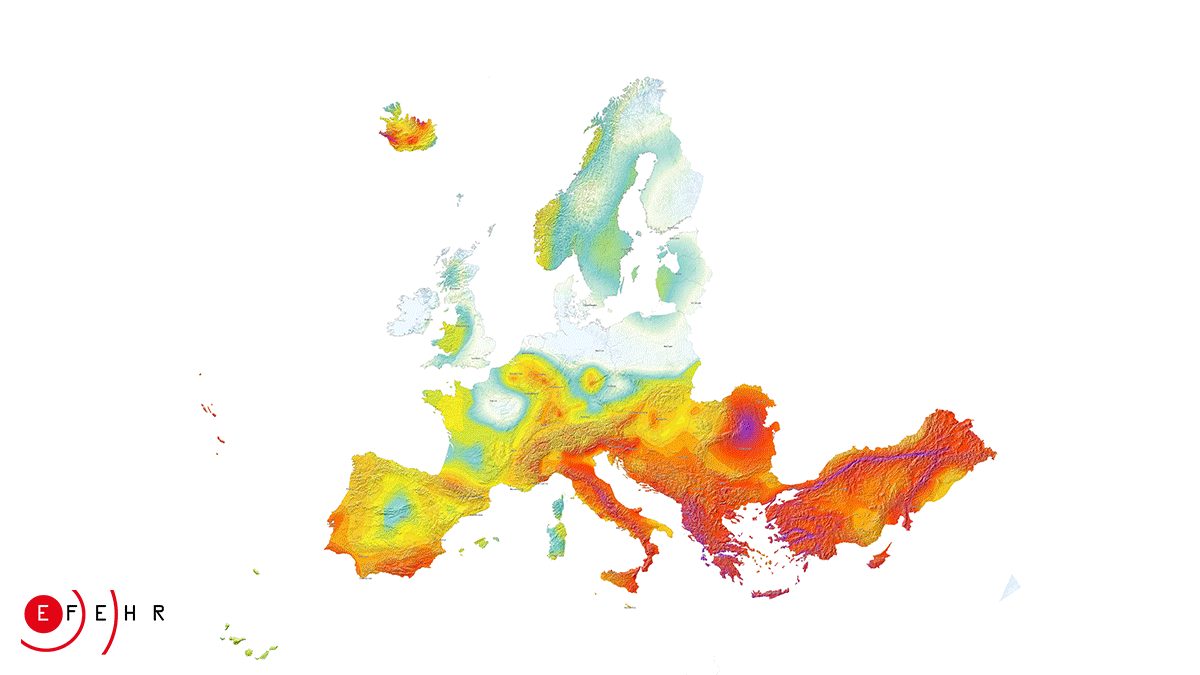Using data from seismic sensors installed in structures and information regarding design, their earthquake performance can be assessed. INFP offers complete services for seismic instrumentation.
Characteristics
- INFP can provide technical solutions and expertise for the instrumentation of structures (civil or industrial buildings, dams, bridges) or free-field analysis and the implementation of an acquisition, processing and interpretation system in near-real time.
- Such a system can be used for:
- determining the dynamic characteristics of the structure (natural frequency, damping) and its evolution over time;
- rapid automated determination of earthquake engineering parameters: time series for acceleration, velocity and displacement or peak values (PGA, PGV and PGD), response spectra, Fourier spectra and spectral reports, CAV, Arias or Housner Intensity etc.;
- earthquake and ambient vibration recording and analysis;
- validation and supplementation of recorded data with data from the Romanian Seismic Network.
- The system offers access to dedicated pages where its status and recorded data can be visualised.
- Various instrumentation schemes can be applied (permanent or temporary, for ambient vibration analysis).
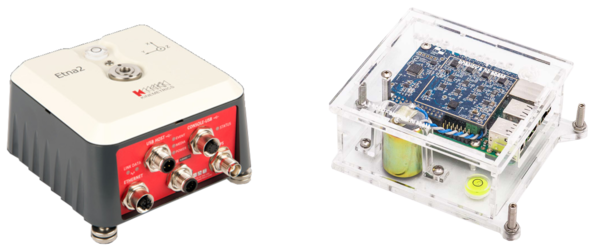
Examples of accelerometers deployed by INFP for structural monitoring: Etna2 (Kinemetrics) or 4D (RaspberryShake).
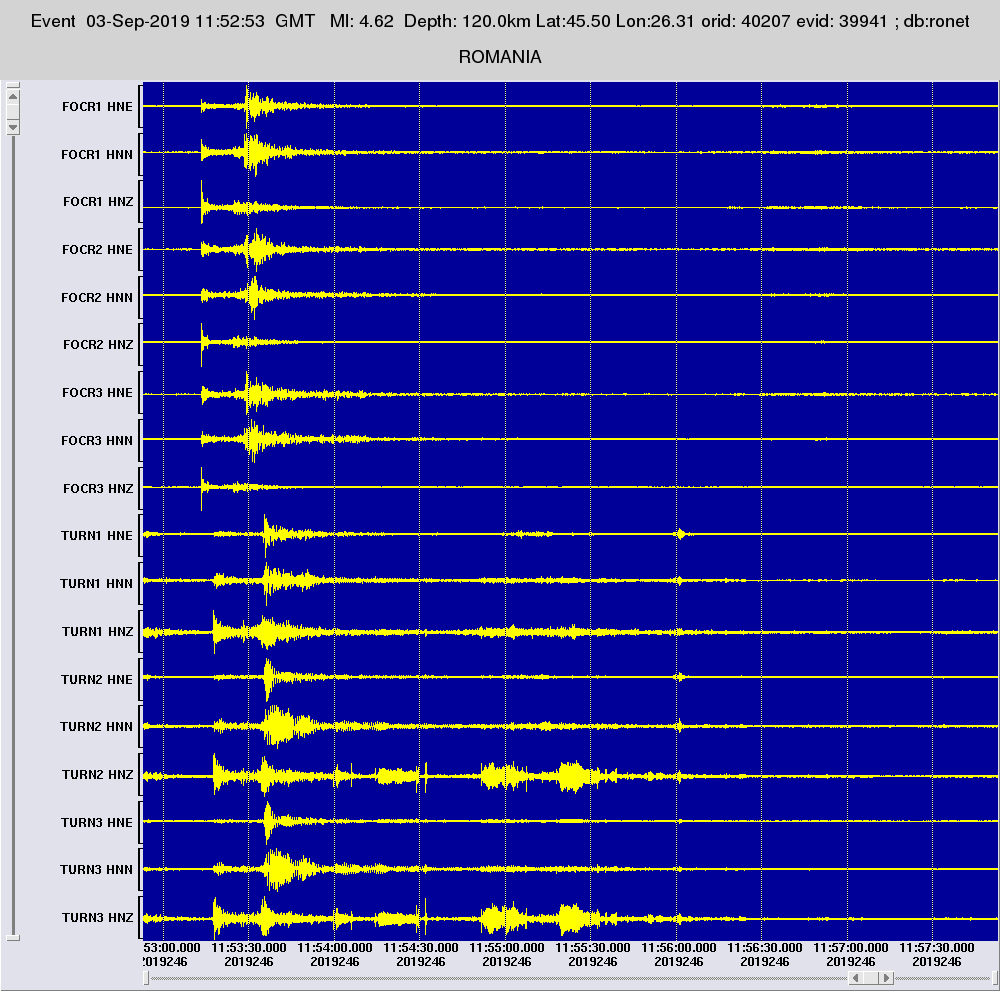
Data recorded in real time, transmitted to the National Data Center servers; for acquisition and data processing the implemented system can be based on renown software such as Antelope or Seiscomp, along with structural monitoring modules such as SHARD, BIGHORN or custom INFP modules.
Examples of applications
- The structural monitoring system facilitates a more rapid and precise post-earthquake evaluation of a structure, offering support in decisions related to housing safety and business continuity.
- The system is very useful to civil engineers for tracking the structural behavior over time and recommending consolidation measures.
- In the case of retrofitted structures, the system can validate the impact of the intervention.
- In case of structures equipped with seismic protection systems (base isolation, seismic dampers), the system can facilitate the evaluation of their performance.
- Offered solutions comply to national requirements regarding seismic instrumentation, as in Annex A.4 of P100-1/2013 and Article 50 from "Regulamentul privind prevenirea şi gestionarea situaţiilor de urgență specifice riscului la cutremure şi/sau alunecări de teren din 2005, aprobat prin OUG 1995/ 2005 (MTCT) și OUG 1160/2006 (MAI)".
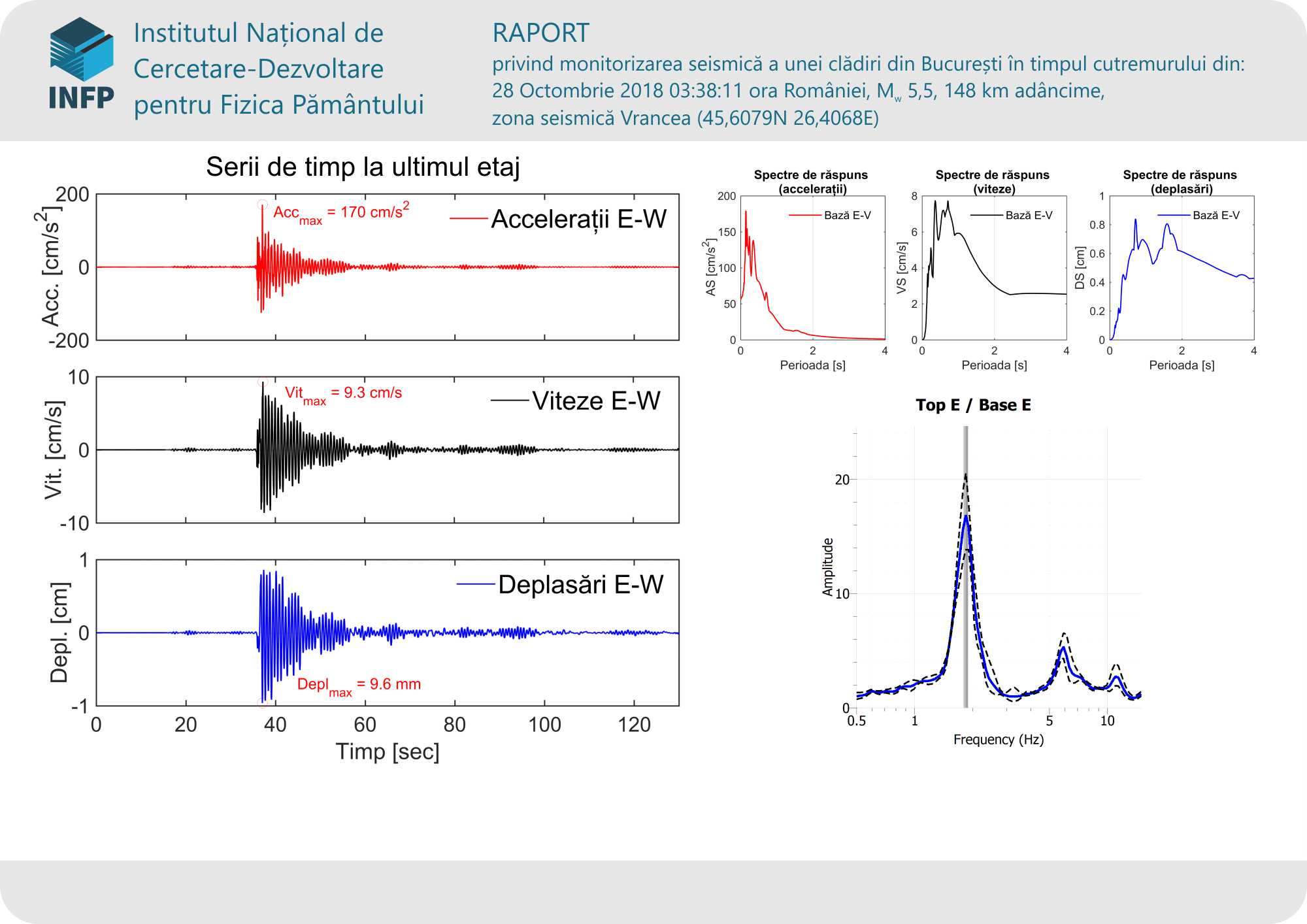
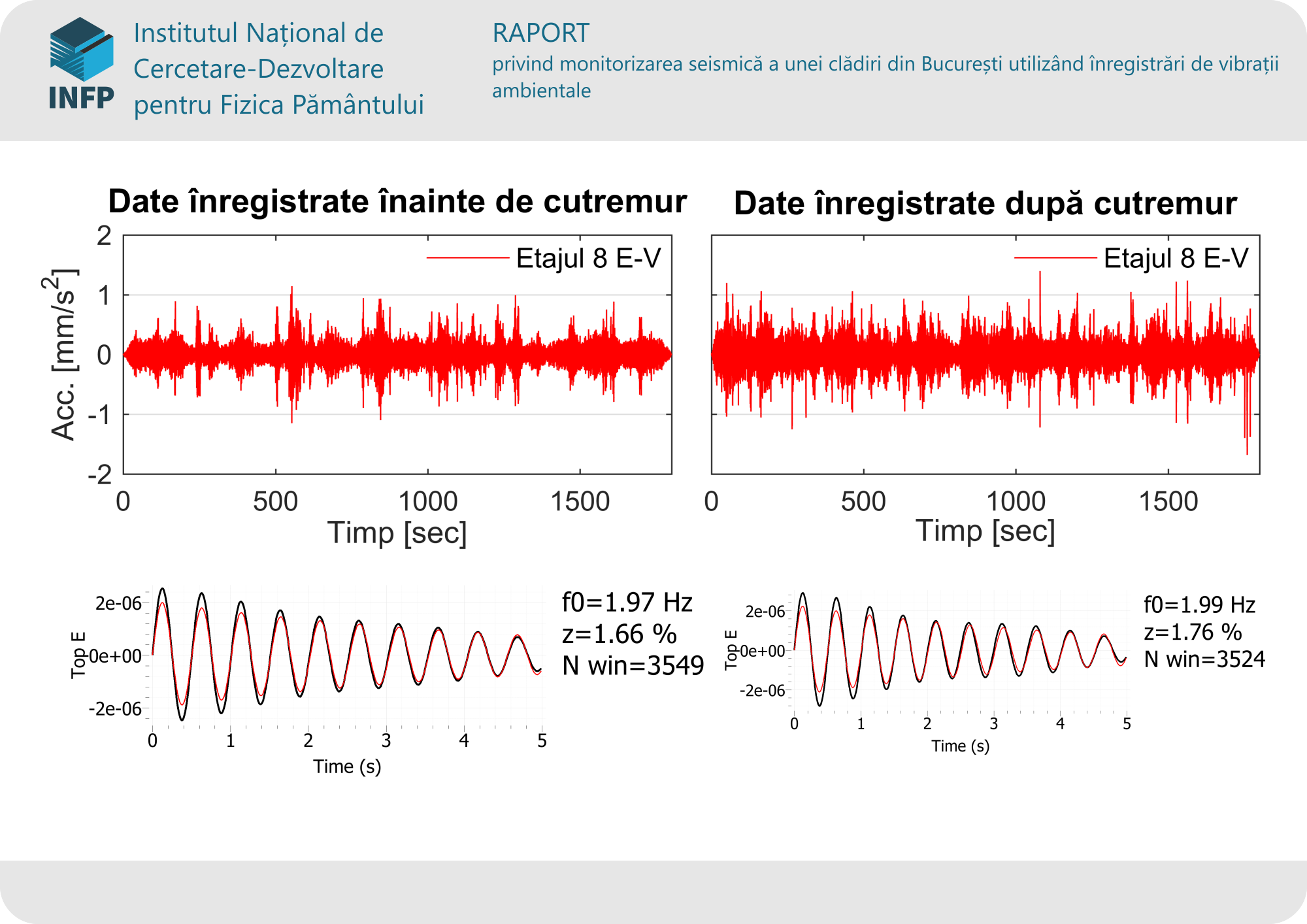
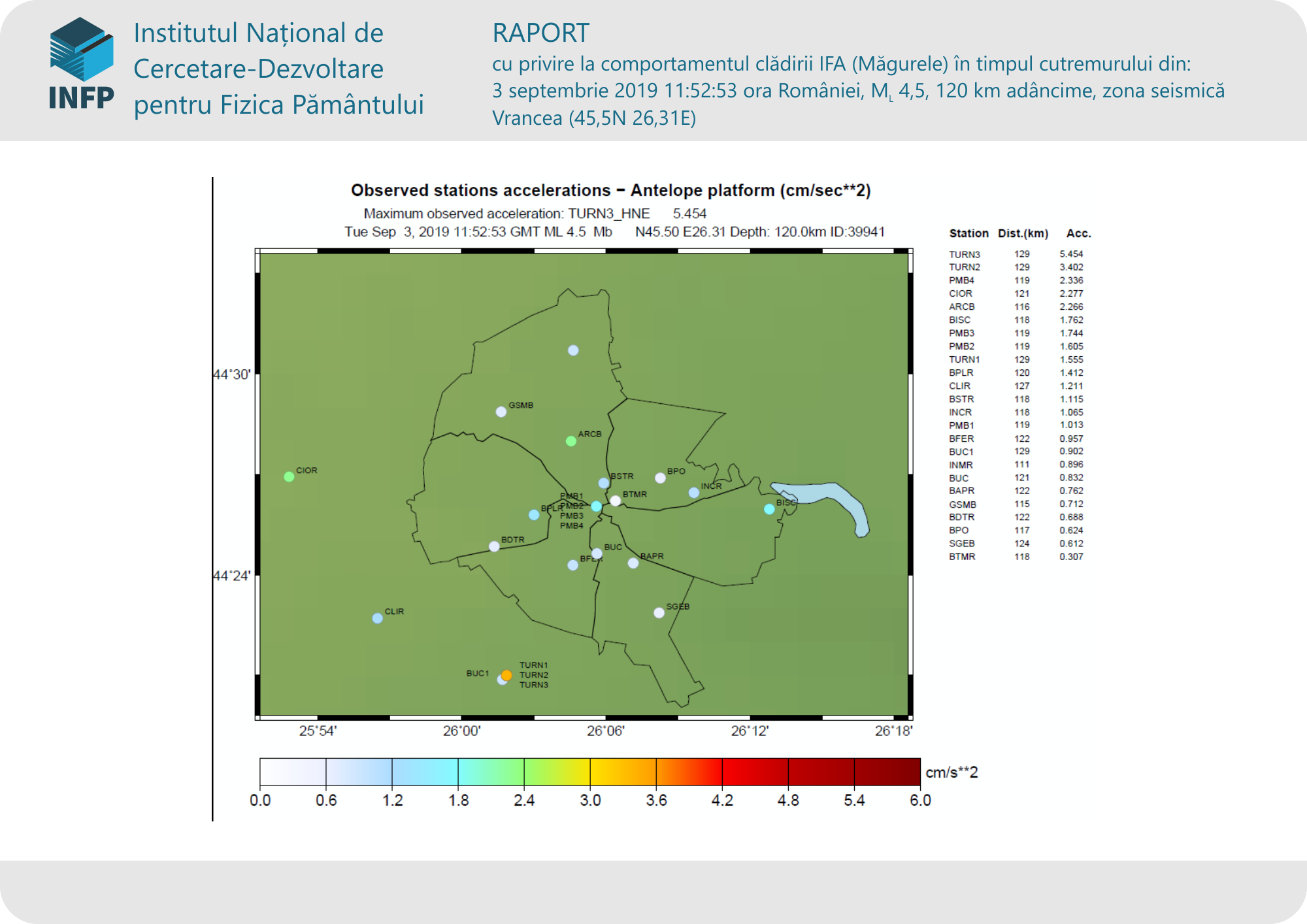
Experience
-
Structural monitoring systems were already implemented by INFP in 6 buildings:
- Victor Slăvescu building, retrofitted and equipped with seismic dampers and base isolators (Bucharest) - from 2011
- The 9th storeys flat of the Institute of Atomic Physics (Măgurele, Ilfov) - from 2013
- Arch of Triumph, retroffited and equipped with seismic dampers and base isolators (Bucharest) - from 2016
- Unirea Hotel (Focșani, Vrancea) - from 2016
- Bucharest Municipality Headquarter, retrofitted and equipped with seismic dampers and base isolators (Bucharest) - between 2017 and 2020
- Nottara Theater (Bucharest) - from 2017 and 2020
- Within the TURNkey Project (2019 - 2022), financed by the European Union, INFP contributes, along with important external partners, to the development of an innovative platform devoted to structural monitoring, using low-cost sensors (Raspberry Shake 4D), which were installed in 5 typologically representative buildings in Bucharest. INFP will facilitate the connection of other stakeholders to this platform.
- Within the PREVENT Project (2019 - 2022), INFP develops a system for integrated monitoring of civil structures. This uses real-time data (seismic, environmental) or other type of data from sensors installed in and near buildings and integrates them in an online platform for the vizualisation and real-time processing of data, using modern algorithms for structural monitoring. The platform provides decisional assistance in emergency situations, in business continuity and in building health monitoring, providing IoT capabilities.
INFP publications
- Grecu, B., Borleanu, F., Tiganescu, A., Poiata, N., Dinescu, R., and Tataru, D. (2021) The effect of 2020 COVID-19 lockdown measures on seismic noise recorded in Romania, Solid Earth, 12, 2351-2368, https://doi.org/10.5194/se-12-2351-2021
- Tiganescu A., Toma-Danila D., Grecu B., Craifaleanu I-G., Balan S.F., Dragomir C.S. (2021) Current status and perspectives on seismic monitoring of structures and rapid seismic loss estimation in Romania, Proceedings of the 1st Croatian Conference on Earthquake Engineering (1CroCEE), 22-24 March 2021, Zagreb, Croatia, https://doi.org/10.5592/CO/1CroCEE.2021.120
- Marmureanu A., Ionescu C., Grecu B., Toma-Danila D., Tiganescu A., Neagoe C., Toader V., Craifaleanu I.-G., Dragomir C.S., Meita V., Liashchuk O.I., Dimitrova L., Ilie I. (2021) From National to Transnational Seismic Monitoring Products and Services in the Republic of Bulgaria, Republic of Moldova, Romania, and Ukraine. Seismological Research Letters, 92 (3): 1685-1703, doi: 10.1785/0220200393
- Tiganescu A., Grecu B., Craifaleanu I.G. (2020). Dynamic Identification for Representative Building Typologies: Three Case Studies from Bucharest Area. Civil Engineering Journal, 6(3), 418-430.
- Balan S.F., Tiganescu A., Apostol B.F., Danet A. (2019). Post-earthquake warning for Vrancea seismic source based on code spectral acceleration exceedance. Earthquakes and Structures, 17(4), 365-372.
- Tiganescu A., Balan S.F., Toma-Danila D., Apostol B.F. (2019). Preliminary analysis of data recorded on instrumented buildings from Bucharest Area during the 28th October 2018 Vrancea earthquake. International Multidisciplinary Scientific GeoConference: SGEM, 19(1.1), 897-904.
- Balan S.F., Tiganescu A., Apostol B.F. (2018). Seismic monitoring of structures subjected to medium intensity earthquakes. International Multidisciplinary Scientific GeoConference: SGEM: Surveying Geology & Mining Ecology Management, 18, 955-962.
- Guéguen P., Tiganescu A. (2018). Consideration of the Effects of Air Temperature on Structural Health Monitoring through Traffic Light-Based Decision-Making Tools. Shock and Vibration, 2018.
- Iordachescu A., Iordachescu E., Grigore A. (2014). Monitorizarea seismica a primei cladiri din Romania protejata antiseismic prin metoda izolarii bazei. Revista Constructiilor nr. 100, 54.
For a detailed offer and collaboration proposals, contact us at: contact[_at_]infp.ro or +40751990082
DOWNLOAD THE PDF BROCHURE








